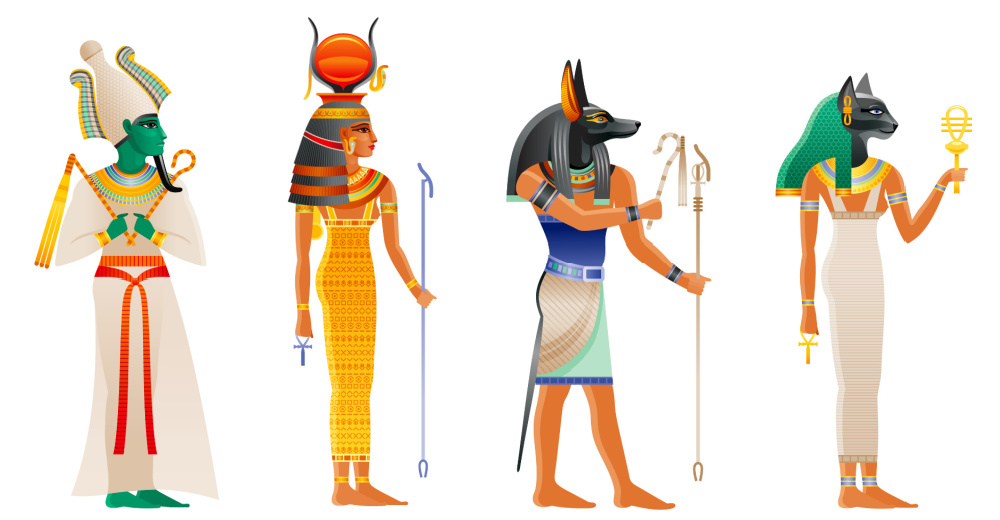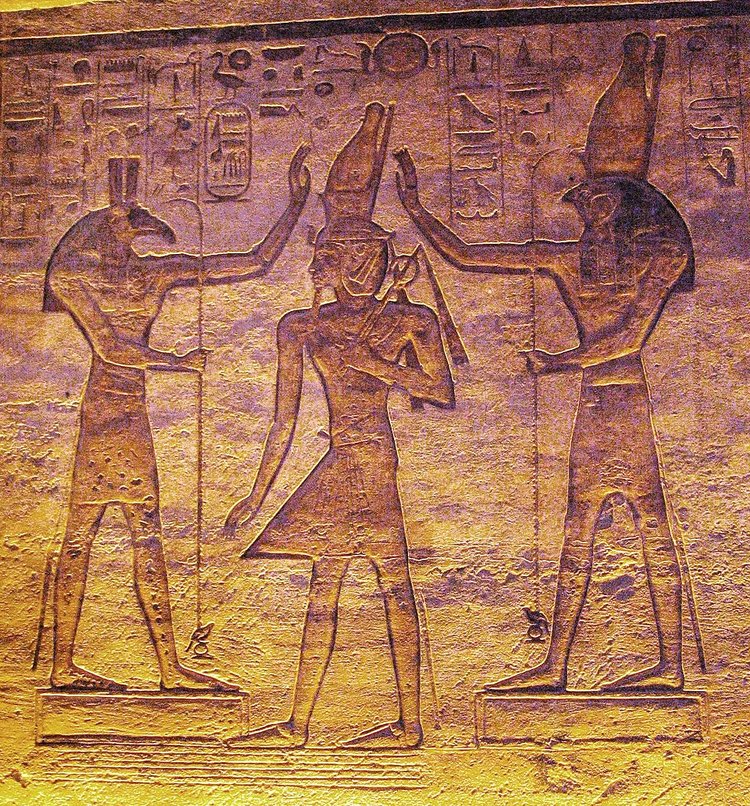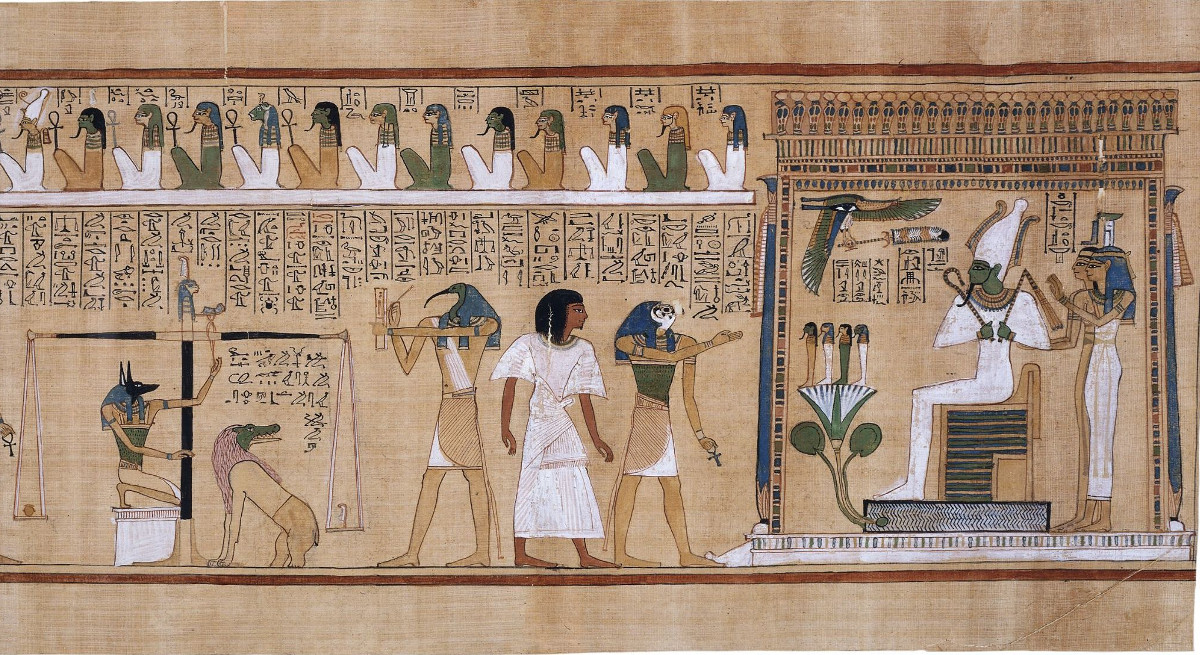By Dimitris Topalis,
Egyptian mythology was the belief structure and the form of the ancient Egyptian culture from at least 4,000 BC to 30 BC with the death of the last ruler of the Ptolemaic Dynasty, Cleopatra. Every form of life, in ancient Egypt, had some relation with the creation and the sustaining of the world by the gods. The Egyptian religion was influenced by trade and became widespread with the opening of the Silk Road in 130 BC, as the port of the Egyptian Alexandria was an important commercial center. The importance of Egyptian mythology to other cultures was in its development of the concept of eternal life after death, reincarnation, and benevolent deities.
The creation of the world
In Egyptian mythology, the journey began with the creation of both the universe and the world out of darkness and chaos. Within this void existed Heka, god of magic, who awaited the moment of creation. Out of this watery silence, Nu rose the primordial hill, known as the Ben-Ben, upon which stood the great god Atum. He looked upon the nothingness and recognized his aloneness and so, through the agency of magic, he mated his own shadow, resulting in him giving birth to two children: Shu, god of air, and Tefnut, god of moisture. Shu gave the principles of life to the early world and Tefnut contributed to the principles of order. Then they left their father to establish the world.
In time, Atum became concerned, because his children, Shu and Tefnut, were gone for a long period of time, and decided to remove his eye and send it in order to search for them. Later, Shu and Tefnut returned with the Eye of Atum (later associated with the “Eye of Ra”) and Atum, grateful for their return, shed tears of joy, dropping into the dark, and giving birth to men and women. These early creatures had nowhere to live. Shu and Tefnut then mated and gave birth to Geb (the earth) and Nut (the sky). Geb and Nut, however, fell in love and were inseparable. Atum found their behavior unacceptable and pushed Nut high up into heaven. The two lovers were able to see each other but were no longer able to touch. Nut was pregnant by Geb and gave birth to Osiris, Isis, Seth (or Set), Nephthys, and Horus, the five most recognizable Egyptian gods.

Osiris and Seth
Osiris administrated the world efficiently co-ruling with his sister-wife, Isis. He created the land of Egypt with perfection, with the Nile river providing for the needs of the people. Seth grew envious of his brother’s power and glory, so he secretly took the exact measurements of his brother and created a chest. After a feast, he offered Osiris the chest and trapped him inside, then threw it into the ocean. Seth then returned and told everyone that Osiris had died and assumed to rule the world. Isis refused to believe that Osiris was dead and set out to find him. Finally, she found the coffin inside the tree of Byblos. The people of the land helped Isis retrieve it and she blessed them. She brought the body back to Egypt and set to find herbs and potions to bring him back to life, leaving the body of Osiris with her sister Nephthys to guard over.
Seth found out where the body of Osiris was hidden and he was able to get it from Nephthys. He proceeded it to take it out of the coffin and split it into forty-two pieces, and scattered them all around Egypt. Isis then returned and found out what happened, so she headed out to gather them with Nephthy’s help, who felt guilty for what happened. They successfully gathered forty-one pieces, as one was eaten by a fish. Then Isis created a replacement for the missing part and mated Osiris, becoming pregnant with her son, Horus. Osiris had been brought back to life successfully by Isis, but because he was incomplete, he could not rule the world as he had before. He instead descended into the Underworld to become the righteous judge and ruler of the land of the dead. Horus was raised in secret in order to protect him from Seth and when he became a man, he challenged his uncle for the rule of his father’s former kingdom. The battle lasted 84 years until Horus defeated Seth and banished him from Egypt. Horus then ruled with his mother Isis and aunt Nephthys as counselors.

The importance of the Underworld
The importance of the Underworld in Egyptian mythology was huge. According to the ancient-egyptian way of interpreting life, when the soul left the body at death, it was thought to appear in the Hall of Truth, to stand before Osiris for judgment. The heart of the deceased was weighed on a golden scale against the feather of Ma’at. If the heart was found to be lighter than the feather, the soul was allowed to move on to the Field of Reeds, the place of purification and eternal bliss. If the heart was heavier than the feather, it was dropped on the floor and eaten by the monster Ammut and the soul would cease to exist. The Egyptians’ fear of death was that their soul would end up in nothingness and cast into the void. The mythology of the ancient Egyptians reflected that joy in living and inspired the great temples and monuments, which are such a big part of Egypt’s legacy today.
References
- Richard H. Wilkinson, The Complete Gods and Goddesses of Ancient Egypt, published by Thames and Hudson, 2017




